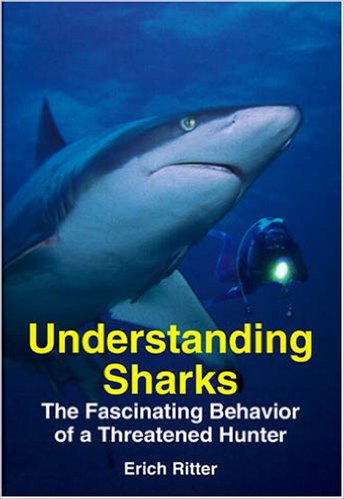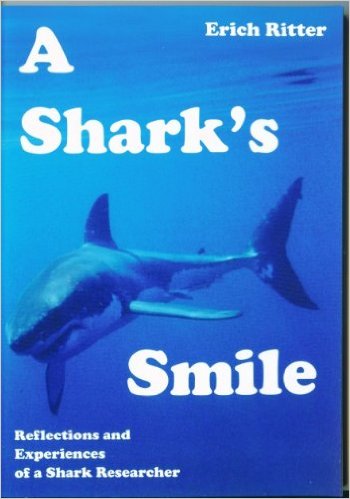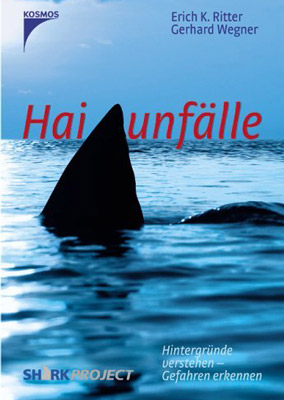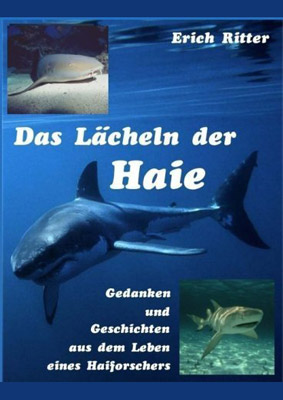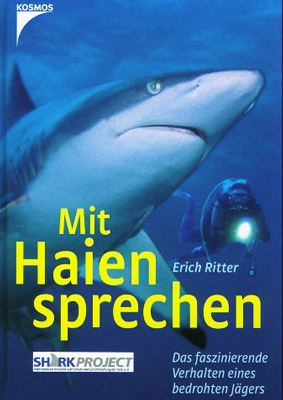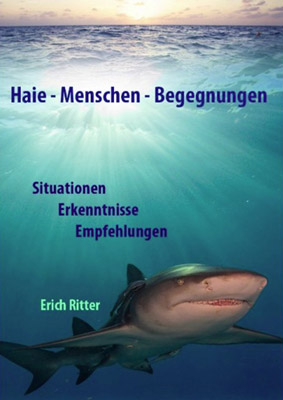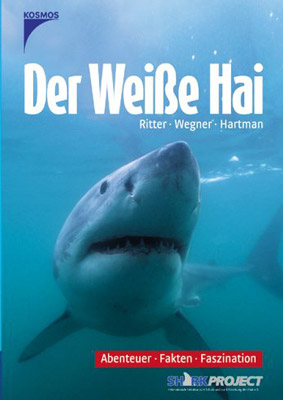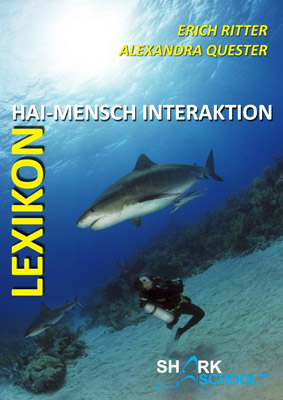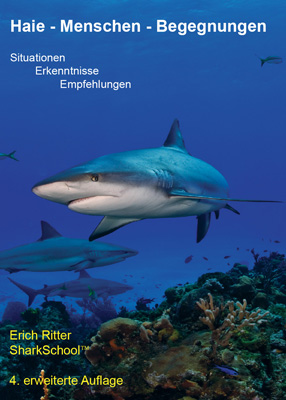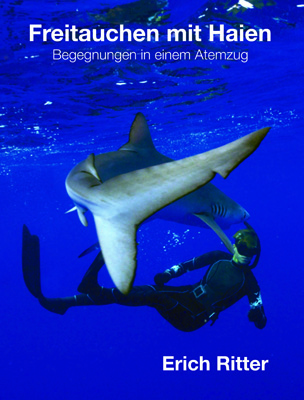Books and Publications
Selected, peer-reviewed scientific publications on the above topics (since 2011):
Amin, R., Ritter, E. & M. Richardson (2020). The potential impact of the erroneous categorization of shark bites and incident modeling. Journal of Marine Biology and Oceanography (in press).
Amin, R., Ritter, E. & B. Bonell (2019). Using human population numbers to compare the incidence of shark bite on the east and west coasts of Florida. Florida Naturalist (in press).
Ritter, E. (2019). Is the shark just drifting or does it take a quick nap? Open Journal of Animal Sciences. In press.
Ritter, E. (2019). Does lowering pectoral fin lowering actually reflect a human-oriented threat display. Examines in Marine Biology and Oceangraphy. In press.
Ritter, E. (2019). Characterization of blacktip shark feeding apparatus injuries due to hook ripping. Journal of Marine Biology and Oceanography. In press.
Ritter, E., Amin, R., Cahn, K. & J. Lee (2019). Against common assumptions: the world’s shark bite rates are decreasing. Journal of Marine Biology. In press.
Ritter, E. & R. Amin (2019). Mating scars among sharks: evidence of coercive mating? Acta Ethologica. 22(1), 9-16.
Ritter, E. & A. Munoz (2018). How to kill another shark: A first inside look at a potential hunting strategy of a Galapagos shark. Open Fish Science Journal. 11(1).
Ritter, E. (2018). The relationship between digestive gases and buoyancy in sharks. Journal of Behavior. In press.
Ritter, E., & A. Dellios (2018). On the separation mechanism between a shark's tooth and its jaw base, with special emphasis on an observation made from a white shark, Carcharodon carcharias. Open Journal of Animal Sciences. 8(3), 329.
Amin, R., Ritter, E. & B. Bonell (2018). Shark bite rates along the US Gulf coast: a first investigation. Environmental Sciences. 6(1), 1-12.
Isci, E. T. & E. Ritter (2018). On the complexity of shark bite wounds: from associated bacteria to trauma management and wound repair. Journal of Trauma and Acute Care Surgery. 85(2), 398-405.
Isci, E. T. & E. Ritter (2017). Comment on clinical features of 27 shark attack cases on La Reunion Island. Journal of Trauma and Acute Care Surgery. 83(6), 1216.
Ritter, E. & R. Amin (2017). The importance of academic research in the field of shark-human interactions: A three-pronged approach to a better understanding of shark encounters. In: Chondrichthyes. L. F. da Silva Rodrigues Filho and J. B. de Luna Sales (eds). InTech, Rijeka, Croatia, 63-80.
Amin, R., Ritter, E., Kulldorf, M., Barbas, A. & M. Schwarzmeier (2016). Sharksuckers, Echeneis naucrates, are non-randomly attached to the bodies of lemon sharks, Negaprion brevirostris: A spatial study. Environmental Sciences, 4 (1), 79–93.
Ritter, E.K. & A. Quester (2016). Do white shark bites on surfers reflect their attack strategies on pinnipeds? Journal of Marine Biology, dx.doi.org/10.1155/2016/9539010.
Ritter, E.K. & R. Amin (2016). Mouth cleaning of lemon sharks. Negaprion brevirostris, by sharksuckers, Echeneis naucrates. Copeia, 104(3), 728–733.
Ritter, E.K. & R. Amin (2015). A study of stealth behavior in the proximity of divers. Open Journal of Animal Sciences, 5 (2), 224-228.
Ritter, E. K. & F. Vargas (2015). On mating behavior of the blotched fantail ray, Taeniura meyeni. Environmental Sciences, http://www.m-hikari.com/es/es2015/es1-2015/4117.html.
Levine, M., Collier, R.S., Ritter, E., Fouda, M. & V. Canabal (2014). Shark cognition and a human mediated driver of a spate of shark attacks. Open Journal of Animal Sciences, doi: 10.4236/ojas.2014.45033.
Unger, R., Ritter, E., Osiyemi, O. & J. Goodman (2014). Antibiotic susceptibilities of bacteria isolated within the oral flora of Florida blacktip sharks: guidance for empiric antibiotic therapy. PlosOne. doi: 10.1371/journal.pone.0104577.
Amin, R., Ritter, E. & A. Wetzel (2014). An estimation of shark attack risk for the North and South Carolina coast line. Journal of Coastal Research, 31(5), 1253-1259.
Bentz, J., Dearden, P., Ritter, E. & H. Calado (2014). Shark diving in the Azores: challenge and opportunity. Tourism in Marine Environments, 10, 71-83.
Ritter, E. (2014). Coasting of pelagic thresher sharks, Alopias pelagicus, in comparison to two other species of the same ecomorphotype, and the limitation of video capturing in natural settings. Environmental Science, 2(1), 13-23.
Ritter, E. & R. Amin (2014). Are Caribbean reef sharks, Carcharhinus perezi, able to perceive human body orientation? Animal Cognition, 17, 745–753.
Ritter, E. & L. J. V. Compagno (2013). First record of a smalltooth sandtiger shark, Odontaspis ferox (Risso, 1910), from the Galápagos Islands. Marine Biodiv. Records. doi:10.1017/S1755267213001115; Vol. 6; e130.
Ritter, E., Amin, R. & A. Zambesi (2013). Do lunar cycles influence shark attacks? Open Fish Science Journal, 6, 71-74.
Amin, R., Ritter, E. & L. Cossette (2013). An investigation of shark density and attack rates in California. Journal of Environmental Ecology, http://dx.doi.org/10.5296/jee.v3i1.2700.
Ritter, E. & L. V. C. Compagno (2013). Clasper flaring: maintenance behavior, or a normally hidden feature of male whitetip reef sharks, Triaenodon obesus? Open Fish Science Journal, 6, 10-12.
Amin, R, Ritter, E. & P. Kennedy (2012). A geospatial analysis of shark attack rates for the East Coast of Florida: 1994-2009.Marine and Freshwater Behaviour and Physiology, 45(3), 185-198.
Ritter, E. (2012). A rare use of a shark’s pectoral fin? Scooping off a sharksucker from the flank area. Open Fish Science Journal, 5, 57-59.
Ritter, E. & R. Amin (2011). Effect of human body position on the swimming behavior of bull sharks, Carcharhinus leucas. Animal and Society, 20, 225-235.
Ritter, E. (2011). Use of sand ripples to enhance chafing in Caribbean reef sharks (Carcharhinus perezi) and blacktip shark (C. limbatus). Bulletin of Marine Science, 87(3), 413-419.

